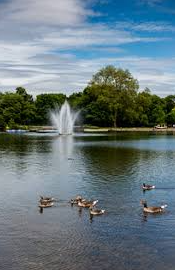
The largest dam removal project in US history will restore free passage for salmon along 400 miles of the Klamath River, revitalising vital habitats for the species.
For the first time in over 100 years, salmon will soon have unrestricted access to the Klamath River and its tributaries, marking a significant step in the largest dam removal project in US history. The project, taking place along the California-Oregon border, will restore the natural flow of the river, allowing salmon to return to crucial habitats just in time for the fall Chinook spawning season.
In the coming days, excavation teams will breach rock dams that have been diverting water upstream of two already removed dams—Iron Gate and Copco No. 1. This will allow the river to flow freely through its historic channel. The removal effort follows decades of advocacy from Native American tribes, including the Karuk Tribe, who have long fought for the restoration of the river and its salmon population.
Leaf Hillman, ceremonial leader of the Karuk Tribe, called the restoration “a good omen for our future,” noting the deep cultural and spiritual significance of salmon to the tribe. The demolition work is part of a broader initiative across the United States to restore river ecosystems by removing aging dams that obstruct natural habitats for fish and other wildlife.
The Klamath River, once the third-largest salmon-producing river on the West Coast, has faced a steep decline in fish populations due to the construction of power-generating dams by PacifiCorp between 1918 and 1962. These dams halted the river’s natural flow and disrupted the salmon lifecycle, leading to dramatic population declines. In 2002, a bacterial outbreak linked to low water levels and high temperatures wiped out over 34,000 Chinook salmon, prompting a new wave of advocacy and, ultimately, the approval for dam removal in 2022.
The project has already seen some successes, including the removal of Copco No. 2 dam and draining of the reservoirs behind the remaining structures. The total cost of the dam removals is expected to reach $500 million, funded by both taxpayers and PacifiCorp ratepayers. Despite the relatively small energy output of the dams—less than 2% of PacifiCorp’s total capacity—hydroelectric power generated by dams has long been considered a clean, renewable energy source. However, increasing concerns over the environmental impact on river ecosystems have led to the removal of several major dams in the West.
The full restoration of the Klamath River will take time, and experts remain cautious about how quickly salmon will return to their historical habitats. While some salmon have already been spotted at the river’s mouth, it’s uncertain how long it will take for them to reach their former spawning grounds.
Mark Bransom, CEO of the Klamath River Renewal Corporation, which is overseeing the project, noted that similar efforts, such as the removal of the Elwha River dams, took years to show tangible results. “You can’t undo 100 years of damage overnight,” Bransom acknowledged, though he remains hopeful for the long-term recovery of the river and its fish populations.












